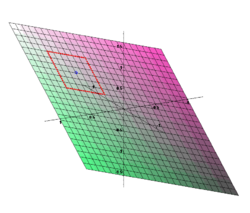
Transformation (function)

In mathematics, particularly in semigroup theory, a transformation is a function f that maps a set X to itself, i.e. f : X → X. In other areas of mathematics, a transformation may simply be any function, regardless of domain and codomain. This wider sense shall not be considered in this article; refer instead to the article on function for that sense. In mathematics, particularly in semigroup theory, a transformation is a function f that maps a set X to itself, i.e. f : X → X. In other areas of mathematics, a transformation may simply be any function, regardless of domain and codomain. This wider sense shall not be considered in this article; refer instead to the article on function for that sense. Examples include linear transformations and affine transformations, rotations, reflections and translations. These can be carried out in Euclidean space, particularly in R2 (two dimensions) and R3 (three dimensions). They are also operations that can be performed using linear algebra, and described explicitly using matrices. A translation, or translation operator, is an affine transformation of Euclidean space which moves every point by a fixed distance in the same direction. It can also be interpreted as the addition of a constant vector to every point, or as shifting the origin of the coordinate system. In other words, if v is a fixed vector, then the translation Tv will work as Tv(p) = p + v.
